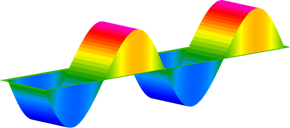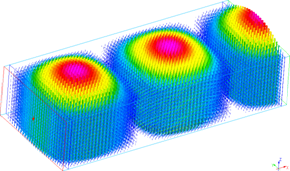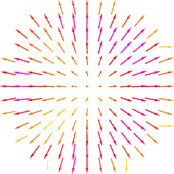Microwave Course
To facilitate using QuickWave in microwave courses, the examples investigating basic electromagnetic scenarios are included, as well as a short background description. These examples, together with microwave background description, become complementary introductory to fundamental microwave phenomena. All the interesting features are visualised using electromagnetic simulation with QuickWave software.
All examples used here were prepared in free CAD QW-Modeller for QuickWave and the models preparation procedure is described in separate documents. All examples considered herein are included in the QuickWave STUDENT Release installation as both, QW-Modeller and QW-Editor projects.

Plane Wave - normal incidence
The aim of this training is to point out main properties and behaviour of the plane wave propagating in an isotropic medium and incident normally at the media boundaries. This course consists of the following topics:
- Basic properties of a plane wave
- Relation between a frequency and a wavelength
- Relation between a wavelength and medium parameters (permittivity and permeability)
- Envelope shape in lossy media
- Normal incidence of a plane wave on the two lossless dielectric media boundary
- Normal incidence of a plane wave on a perfect conductor surface
- Quarter wavelength transformer
- Half wavelength transformer
- Impedance matching
- Plane wave incident normally at the layered structure of three lossless media: air-concrete-air
- Plane wave incident normally at the layered structure of three lossless media: air-concrete-air impedance matching
Rectangular Waveguides
Waveguides are transmission lines commonly used in electronics, especially in higher frequency ranges like microwaves. A waveguide can be simply described as a metal pipe usually filled with air.
This tutorial is dedicated to rectangular waveguides and contains all basic information concerning their operation rules. This course consists of the following topics:
- Wave propagation in rectangular waveguide
- Waveguide mode
- Higher order modes
- Wavelength in a waveguide
- Propagation below the cutoff frequency


Circular Waveguides
Waveguides can be simply described as metal pipes. Depending on their cross section there are rectangular waveguides (described in separate tutorial) and circular waveguides, which cross section is simply a circle.
This tutorial is dedicated to basic properties of circular waveguides. This course consists of the following topics:
- Cutoff frequency
- Propagation modes
- Mode TM01
- Mode TE11